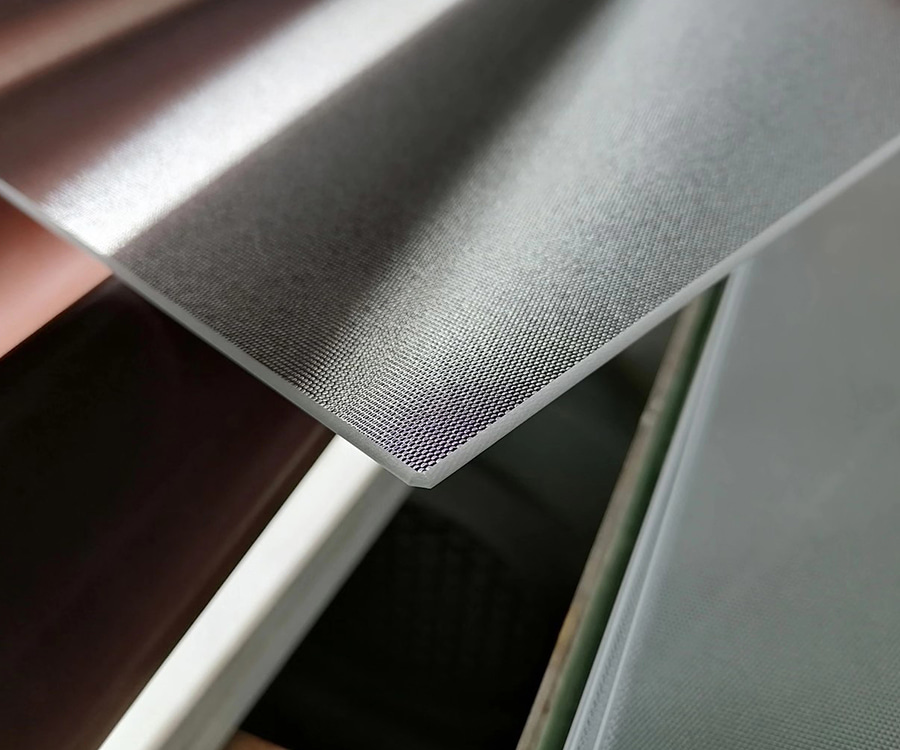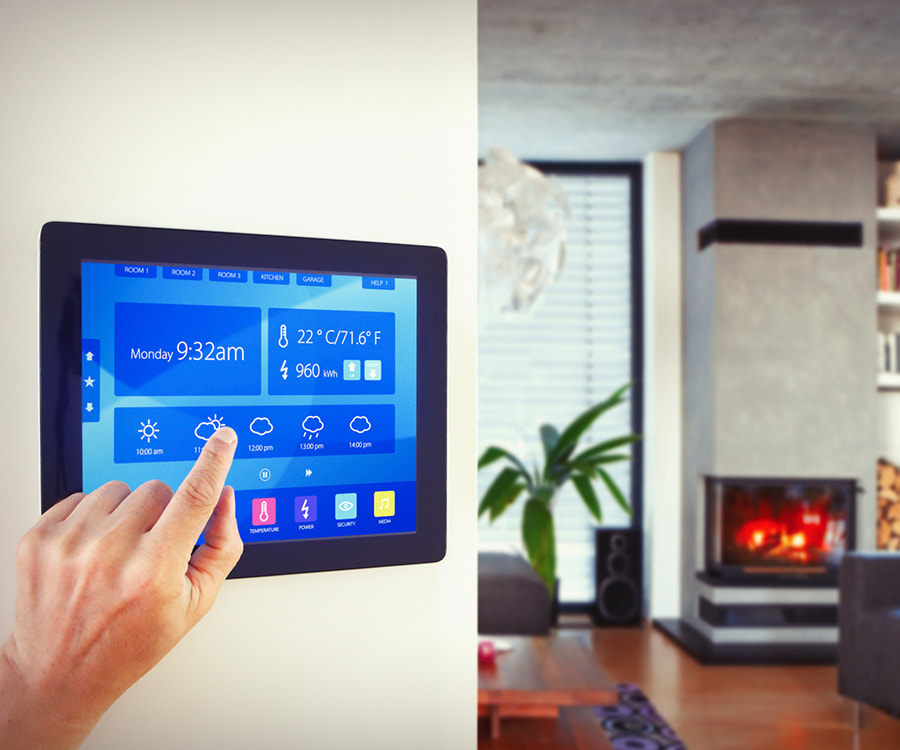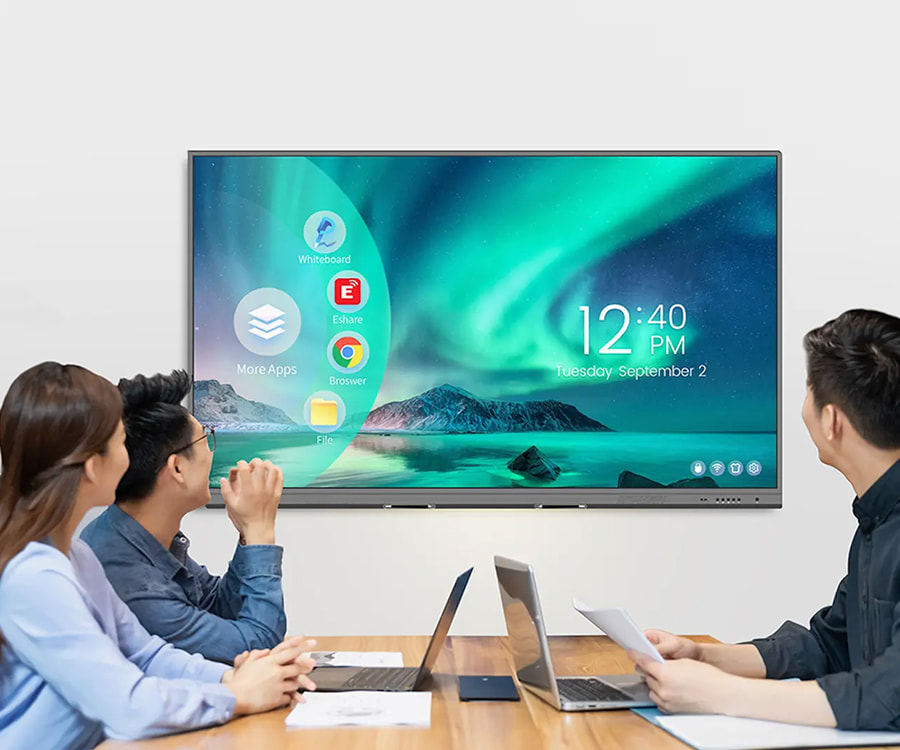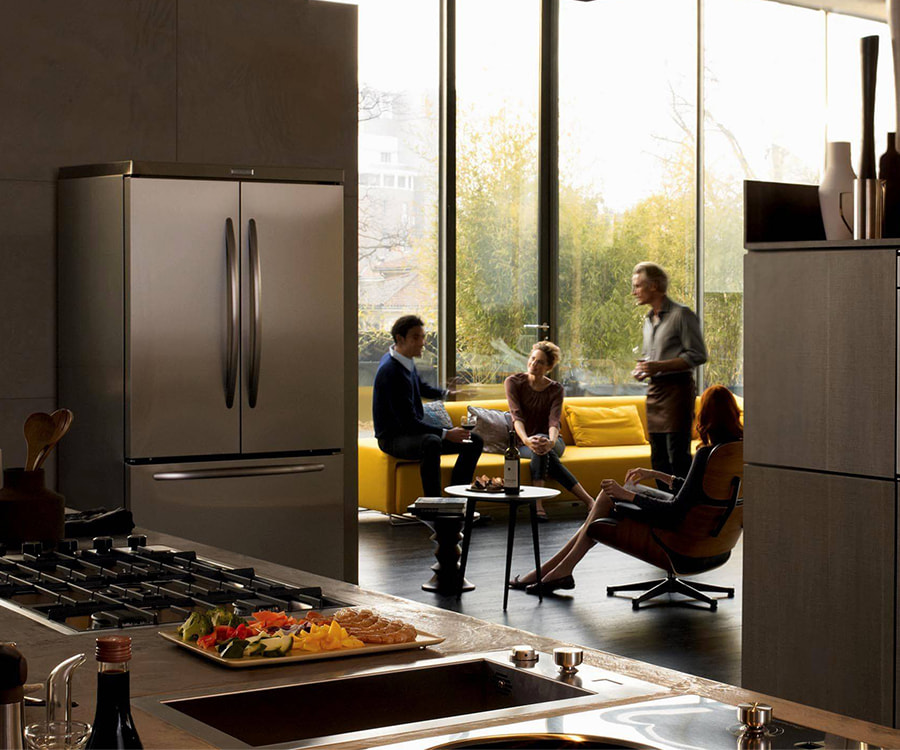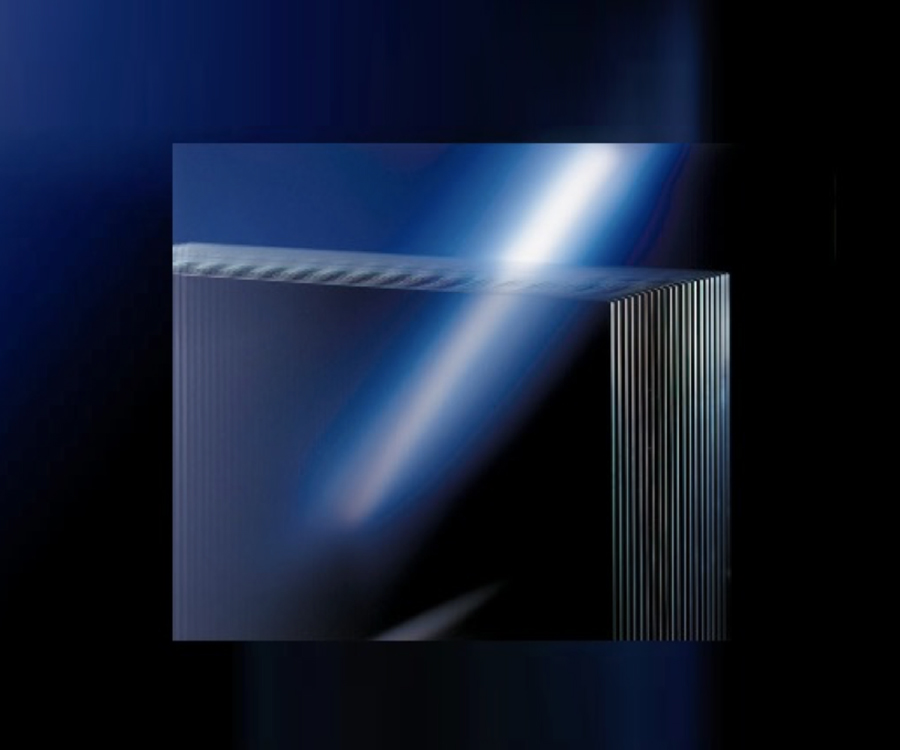Home appliance decorative panel glass provides a variety of different processing options to meet different design needs and aesthetic effects. Frosting is a technology that makes the glass surface hazy. Usually, this can be achieved by immersing the glass in a prepared acidic liquid, using the strong acid to corrode the glass surface, and under the action of hydrogen fluoride in the solution, crystals are formed on the glass surface to achieve a frosted effect. If properly treated, the surface of frosted glass will be extremely smooth, and the crystals will form a hazy effect. The frosting process makes the glass surface soft and delicate to the touch. Due to the increase in surface roughness, frosted glass is relatively less likely to leave fingerprints and stains. The frosted effect can create a warm and comfortable home atmosphere and enhance the aesthetics of the product.
The coating process is a technology that forms one or more layers of thin films such as metals, metal oxides, nitrides, etc. on the surface of the glass. Common coating methods include physical vapor deposition (PVD) and chemical vapor deposition (CVD). The coating process usually includes steps such as cleaning the glass surface, drying, spraying a metal layer, and light curing. Coating can improve the scratch resistance, radiation resistance, weather resistance and other properties of glass. By adjusting the material and thickness of the coating layer, the transmittance and reflectivity of light can be controlled to achieve specific light and shadow effects. The coating layer can also give the glass rich colors and luster, enhancing the beauty of the product.
These glazes are mixed with carefully proportioned binders and colorants. The binders act as adhesives to ensure that the colorants can be evenly and stably attached to the glass surface; while the colorants are responsible for giving the glazes rich colors and textures, making the printed patterns lifelike. The selection of glass glazes should take into account their high temperature resistance, wear resistance, chemical corrosion resistance and compatibility with glass to ensure that the glazes can be firmly solidified on the glass during high-temperature firing and maintain a long-lasting decorative effect.
The implementation process of the color printing process is full of delicate and technological elements. Designers design exquisite patterns and color schemes based on the overall style of home appliances and market demand. Subsequently, these design patterns are converted into templates or digital files suitable for printing. During the printing process, a precision screen printer or digital inkjet printer is used to accurately print the glaze on the glass surface according to the design pattern. This process requires strict control of parameters such as printing pressure, speed, and temperature to ensure the stability and consistency of printing quality.
After printing, the glass panel needs to undergo a high-temperature firing process. This step is a key link in the color printing process. It not only solidifies the glaze on the glass surface, but also promotes the chemical bonding between the glaze and the glass, forming a strong and beautiful protective layer. During the high-temperature firing process, the organic matter in the glaze will burn and volatilize, leaving the inorganic matter tightly bonded to the glass surface to form a dense glaze layer.
The application of color printing technology has greatly enhanced the decorative effect of home appliances. By printing a variety of complex and exquisite patterns and colors, the color printing process has freed home appliances from the traditional monotonous appearance and presented a more personalized and artistic style. These patterns and colors not only meet the aesthetic needs of modern consumers, but also reflect the user's personality and attitude towards life to a certain extent.
The processing options provided by home appliance decorative panel glass, such as frosting, coating, and color printing, are unique and can meet different design requirements and aesthetic effects. These processing techniques not only improve the appearance and practicality of the product, but also enhance the market competitiveness and added value of the product.



